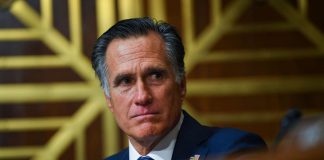JUNE 11, 2018
 Fed Chairman Jerome Powell will hold a press conference next Wednesday.
Fed Chairman Jerome Powell will hold a press conference next Wednesday.
Central bank faces risk of causing ‘knee-jerk hawkish’ market reaction
The Federal Reserve will raise its short-term target rate while trying to keep markets calm by signaling future interest-rate hikes will come at an “unhurried” pace.
The Fed will make few wrinkles because “it is in a good spot,” said Ellen Zentner, chief U.S. economist at Morgan Stanley. “The data since March is pretty much in line with the outlook and the rate path clearly remains a gradual one,” she said in an interview.
“We’re just not at the point where the Fed needs to be worried about the rise of inflation,” Zenter added. While core inflation is moving toward the Fed’s 2% target, inflation pressures are not broad based and wage growth in contained, she said.
Most of the year-on-year growth in core services inflation since last fall owes to two categories, financial services and hospitals, she said.
Kevin Logan, chief economist at HSBC Securities, agreed. “They don’t feel pressed. They have settled into this gradual path of hiking every three months and it seems to be working OK. They don’t want to be disturbing the financial market.”
Even though growth in the second quarter is looking strong, with some tracking estimates as high as 4.6%, the Fed will be cautious, concerned with the ongoing G-7 trade conflict, the recent bout of market stress over Italy, and disappointing growth in other advanced economies, said Krishna Guha, Fed watcher at Evercore ISI.
The market has already priced in a decision by the Fed to raise the target range of the federal funds rate by 25 basis points to a range of 1.75% to 2%. This will be the second rate hike this year and the seventh move since the start of the tightening cycle.
The interest-rate decision will come at 2 p.m. Wednesday after two days of talks. The Fed will also released updated economic forecasts for the economy and interest-rate policy, and Chairman Jerome Powell will hold a press conference.
Analysts say any changes to the Fed’s forecast and policy statement may get in the way of its plans for a calm message.
Markets will be focusing on the central bankers updated “dot-plot” projections for interest rates. If only one official decides to raise their forecast for rates, that would send a signal of four more moves this year, complicating the unhurried message.
“It would mean that one Fed officials thought U.S. labor market conditions trump all the global worries and the market would have to take that on board,” Logan said.
At the moment, traders see a 38% chance of four rate hikes this year. That is down from over 50% before the bond market selloff in view of political turmoil in Italy.
The yield on the 10-year Treasury yield has fallen to 2.96% after topping 3% last month.
Another hurdle is that Fed officials, in the last few weeks, have expressed an interest in updating the policy statement.
At issue is language that has been in the statement since the Fed moved rates off zero in December 2015, that says “the federal funds rate is likely to remain, for some time, below levels that are expected to prevail in the longer run.”
In an interview with MarketWatch, Cleveland Fed President Loretta Mester pointed out that the language was something she and her colleagues probably needed to “think about.” Later Fed Governor Lael Brainard called it “stale.”
The problem is that these potential language changes “risk a knee-jerk hawkish reaction,” said Michael Hanson, head of global macro strategy at TD Securities.
In essence, the Fed would be signaling that policy may start to bite while at the same time saying it wants to hike more, Hanson said.
Zenter said the Fed may try to get around this by only taking “baby steps.” The Fed would leave in the language about the longer-run but change its description of the current stance of policy from accommodative to “modestly” accommodative.
Courtesy/Source: MarketWatch










































































































